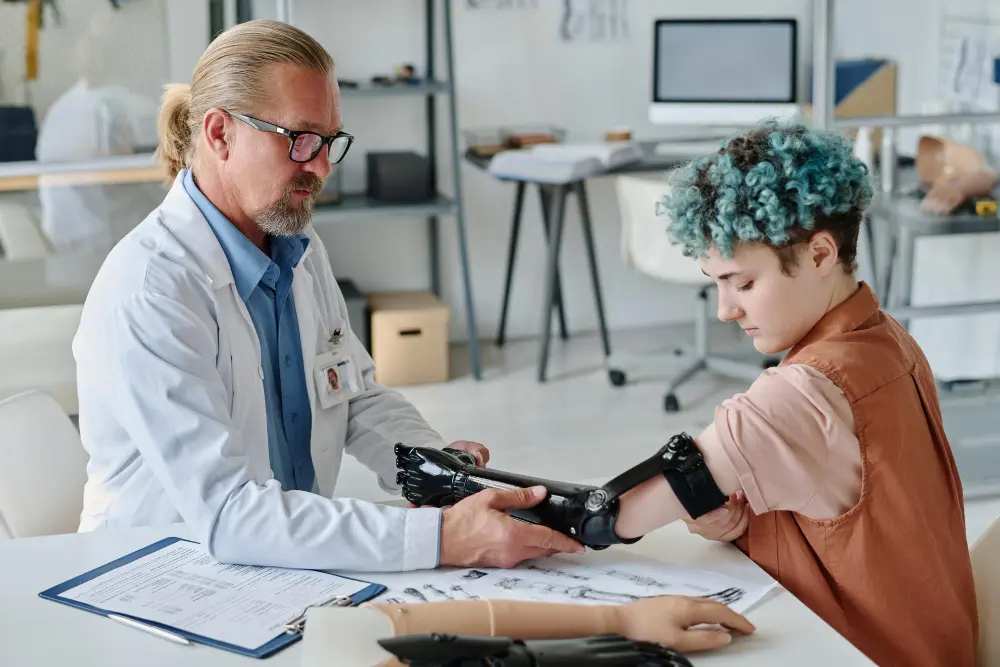
What Happens During Your First Prosthetic Fitting
Your first prosthetic fitting can feel like uncharted territory, but knowing the key steps can help you feel more at ease. Here’s what you can expect:
- The process starts with evaluating your residual limb’s size by a prosthetist, shape, skin condition, and strength, along with discussing your health, goals, and lifestyle.
- Your prosthetist recommends a prosthetic limb that fits your needs. They’ll explain the design, materials, and components so you know what to expect.
- Precise measurements of your limb are taken to design a custom prosthesis that fits you comfortably.
- During the fitting, your prosthetist adjusts the prosthesis to make sure it aligns with your body and feels secure.
- You’ll work on walking, balancing, and using your prosthesis in daily life with guidance. You’ll also learn how to clean and maintain it to keep it in great condition.
- You’ll attend regular follow-ups to fine-tune the fit, fix any issues, and ensure that your prosthesis continues to work as your needs change.
How to Get Physically & Mentally Ready for Your First Prosthetic Fitting
Your first prosthetic fitting is an important step, and how you prepare can make a big difference:
Physical Preparation
Proper care for your residual limb is a must. Keep it clean and inspect it for skin irritations. Use a shrinker to control swelling as advised by your healthcare provider. Stay as active as possible with light exercises like stretches, which can improve circulation and strengthen muscles needed for mobility.
Mental Preparation
The fitting process can be emotionally demanding, but remember, it takes time. Set realistic goals, and don’t rush yourself. Surround yourself with supportive people, such as family or amputee groups. Open and honest conversations with your prosthetist can also ease your mind and help you understand what’s ahead.
Essentials to Bring & Ask
Walking into your prosthetic fitting with the right items and questions can make the day smoother and more productive. Here’s a quick checklist to guide you:
What to Bring
- Medical records related to your amputation.
- A list of medications you’re taking.
- Comfortable, loose-fitting clothing.
- Prosthetic socks or supplies you currently use.
- A way to take notes during the session.
Questions to Ask
- Which prosthetic type suits my needs?
- How should I care for the prosthesis?
- How often should I schedule follow-ups?
- How will my prosthetic be adjusted as my limb changes?
Unified Medical Equipment Solutions Is Here to Help
At Unified Medical Equipment Solutions (UMES), we understand the importance of this life-changing step. Our compassionate, highly trained team is committed to guiding you through the process, offering ongoing support to ensure your prosthesis meets your evolving needs.
From your first fitting to regular check-ins, we’re here to empower you with high-quality, personalized prosthetics that restore comfort, mobility, and confidence. Click below to learn more about how we can assist you.
